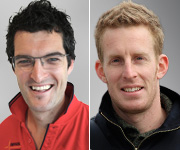It serves as a frequent reminder of the onerous nature of our profession that as doctors-in-training we are often asked “Are the hours horrible?” or “Do you ever get any sleep?”. While the questions haven’t changed, thankfully, the answers have.
In 2012 the term safe hours resonates louder than it did 10 years ago. Even in our short careers, we have observed wider acknowledgement of the impact of fatigue on patient safety and the health and wellbeing of doctors.
It is therefore pleasing that the latest Safe Hours Audit from the Australian Medical Association reports a reduction in the number of doctors who are at high risk of fatigue.
Released last week, the findings are based on a survey of 1399 hospital-based doctors in August 2011. A multi-factorial risk assessment model was applied to calculate the proportion of doctors at low, significant and high risk of fatigue. Results were compared to the 2001 and 2005 audits, which used the same assessment tool.
The latest report shows a steady decline in the percentage of doctors in the higher-risk categories, from 78% in 2001 to 62% in 2005 and 53% in 2011. On a proportional basis, the improvements were most pronounced in the highest-risk category.
Although not included in the published report, the data showed broadly consistent reductions in fatigue risk across doctors of all seniority levels.
Not unexpectedly, the report verifies that some high-risk practices persist. For example, one doctor worked 120 hours in a week, and another, 43 hours in a single shift. Similarly, 21% of respondents reported not having had a day off in the 7-day audit period.
While media reports have focused on the extent to which doctors’ current work practices compromise patient safety, the story told by the AMA Safe Hours Audit is a generally positive one.
It suggests that a number of interventions ― professional campaigns, the introduction of codes of practice, industrial requirements and workforce expansion ― have had a measureable impact on the extent to which patients and doctors are exposed to fatigue-related harm.
The reductions have been achieved in the absence of the rigid regulatory frameworks imposed in Europe and North America.
Despite the positive trends, there remains significant room for improvement. For example, some hospitals and disciplines still have extremely onerous after-hours and weekend on-call requirements.
Certain specialties have avoided this by implementing shiftwork regimens. Emergency medicine and, to a lesser extent, obstetrics and gynaecology, have embraced this concept and, in the AMA report, both have lower risk ratings than the other specialities. However, this is not a viable solution for all disciplines and there is some evidence that, even when it is done in designated shifts, night work is associated with increased fatigue.
The latest AMA figures are already raising questions about the effect of safer working hours on postgraduate training. Though a recent systematic review failed to identify an overall negative impact from capped working hours, registrars in some specialties remain concerned about the encroachment on procedural training.
Earlier this year, Australian surgical trainees proposed a 60-hour week as providing an appropriate balance between the risk of fatigue and access to training opportunities.
With escalating numbers of trainees, increasingly nuanced rostering arrangements will be required to achieve the parallel objectives of high-quality training and fatigue minimisation. A degree of clinical workflow redesign may also be required. Fatigue risk and training quality are not simply functions of total working hours, and this must be reflected in work practices.
Overall, the AMA data are encouraging. While they suggest there is still substantial room for improvement, they confirm that progress is achievable without a one-size-fits-all regulatory approach to safe hours.
The challenge now is to maintain the momentum.
Rob Mitchell is an emergency registrar at Townsville Hospital and Immediate Past Chair of the AMA Council of Doctors-in-Training.
Will Milford is a senior obstetrics registrar at Redcliffe Hospital and Chair of the AMACDT.
Posted 6 August 2012

 more_vert
more_vert
Fewer hours than what?
Current hours not stipulated, therefore answering the question is subjective and not objective.
I’m abstaining from this poll.